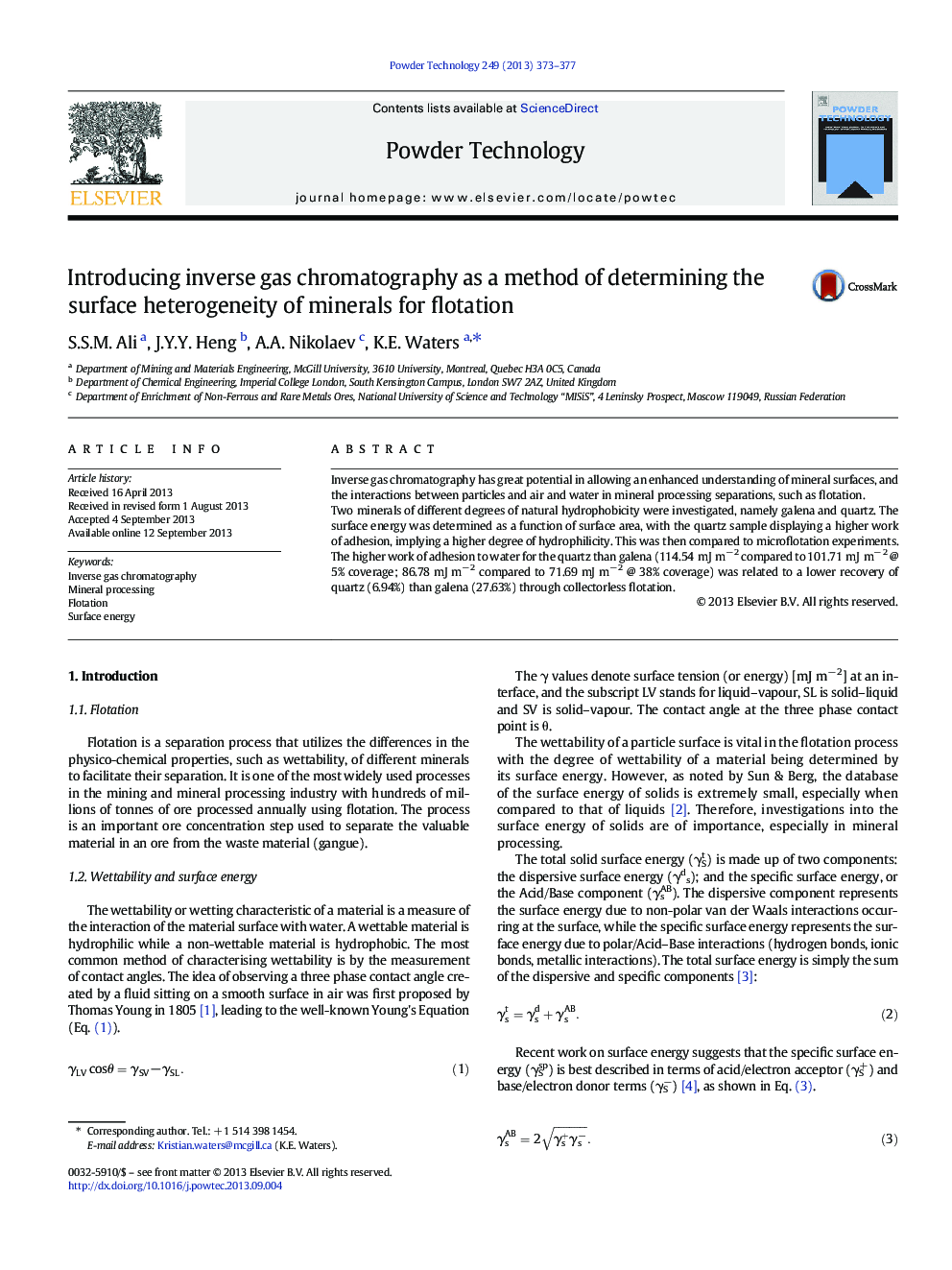| Article ID | Journal | Published Year | Pages | File Type |
|---|---|---|---|---|
| 236355 | Powder Technology | 2013 | 5 Pages |
•Surface energy of galena and quartz was determined as a function of surface area.•Dispersive and specific components are used to calculate work of adhesion to water.•Work of adhesion to water was calculated and compared to a microflotation experiment.•iGC shows to be a useful tool to measure flotation-related properties of minerals.
Inverse gas chromatography has great potential in allowing an enhanced understanding of mineral surfaces, and the interactions between particles and air and water in mineral processing separations, such as flotation.Two minerals of different degrees of natural hydrophobicity were investigated, namely galena and quartz. The surface energy was determined as a function of surface area, with the quartz sample displaying a higher work of adhesion, implying a higher degree of hydrophilicity. This was then compared to microflotation experiments. The higher work of adhesion to water for the quartz than galena (114.54 mJ m− 2 compared to 101.71 mJ m− 2 @ 5% coverage; 86.78 mJ m− 2 compared to 71.69 mJ m− 2 @ 38% coverage) was related to a lower recovery of quartz (6.94%) than galena (27.63%) through collectorless flotation.
Graphical abstractThis work shows the potential for using inverse gas chromatography in understanding mineral flotation. As can be seen from the figure, quartz has a higher work of adhesion to water than galena does, and this is borne out in microflotation tests.Figure optionsDownload full-size imageDownload as PowerPoint slide
